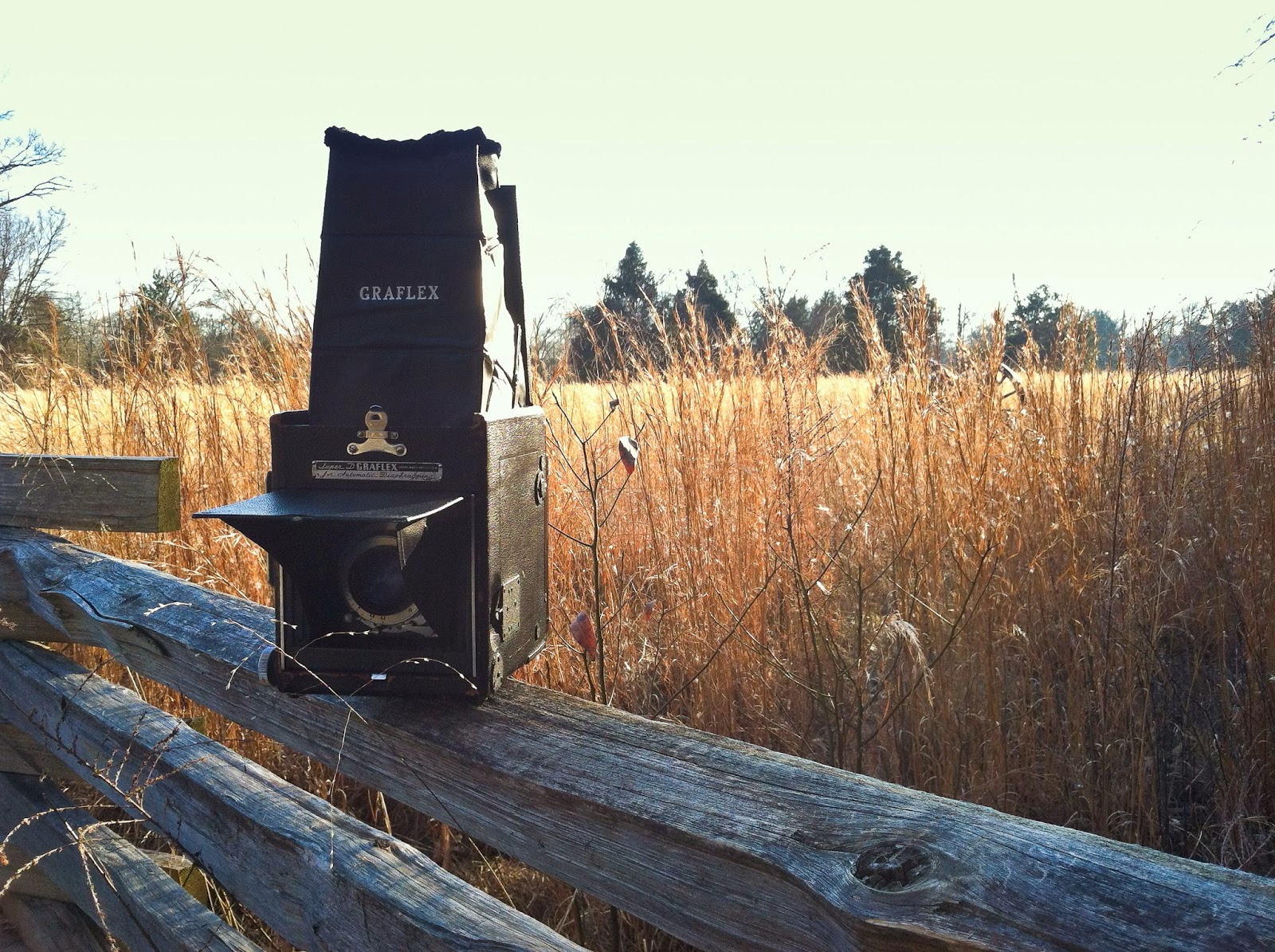I had learned the hard way earlier in the year about not having a bag full of holders preloaded and ready to go. So I solved that by reminding myself to always have my Super D and Pacemaker Speed Graphic ready to go. So I always keep them at the ready with color and black and white holders loaded just in case. Which was good as all I had to do was grab and go.
On a whim I also grabbed my Graflex Graphic 35, a small fixed lens 35mm camera for general snap-shooting. (I'll be posting a review on this fabulous little camera later.) I loaded it up with Fuji Acros 100. Another famed black and white film I've never shot before.
We arrived on a particularly cold day. Thus most of the Zoo was deserted.
 |
| Remodeled Entrance Nashville Zoo. (Graflex Graphic 35 shot with Fuji Across 100) |
Many of the animals are not suited to the colder weather and were in their shelters. After a short walk we came to the Grassmere House.
 |
| Graflex Graphic 35 shot with Fuji Acors 100 |
The Grassmere Historic House was built in 1810. Constructed by Col. Michael Dunn it is the second largest old home in Davidison County Tennessee that is open to the public. Col. Dunn's son-in-law later purchased the adjacent farm, and it prospered late into the 1800's.
Eventually the house and farm were handed down the line of family to William and Kate Croft. Their two daughters Margaret and Elise, having no children of their own and concerned for the future of their home, entered into an agreement with the Nashville Children's Museum in 1964. The agreement stipulated that the Museum would pay for the property taxes and maintenance of the property and the sisters could live there for the rest of their lives. Upon their deaths, ownership of the home would transfer totally to the Museum. The only stipulation was that the property would have to be used as a "nature study center," to educate the public about animals and the environment.
 |
Grassmere Historic Home during Christmas weekend celebration.
Graflex 4x5 Super D: Ilford HP5+
|
It eventually became Grassmere Wildlife Park with trails and examples of native North American Wildlife, but was not profitable and closed in 1995. It become the property of Nashville Metro and in keeping with the will of the Croft Sisters the Nashville Zoo was invited to utilize the property. The house was restored and reopened to the public in 1998. With the farm opening in 1999.
Today, the Nashville Zoo runs right next to the home and offers visitors a very unique zoo going experience with the Historic Home offering many unique activities and presentations along with the adjacent farm and the Zoo and it's very bio-diverse exhibits.
 |
| "Tipton and Boone" American Milking Devons Graflex Graphic 35: Fuji Acros 100 |
 |
| Graflex Graphic 35: Fuji Acros 100 |
 |
| It was a cold day. A child watches the animals from the shelter of the barn. Graflex Graphic 35: Fuji Acros 100 |
This particular day had some Christmas celebrations and tours of the house available. Flash was prohibited inside the house, and since I had only two holders of 400 speed film I didn't shoot any inside. (Another time perhaps?) But they did have some live music and an Organ Grinder outside the front.
 |
| Ted Guillaum and His Mechanical Organ. Graflex Super D 4x5 with Foma Retropan 320. |
Ted is a kind man, who seemed as interested in my Graflex as I his mechanical instrument. The instrument is an Organ made in Germany and is designed to be operated using reels similar to a small player piano reel. Here, have a visit at his website, he can explain it better than I can! http://organgrinderted.weebly.com/about.html
After meeting Ted and touring the home we set about visiting around the zoo. Here are some photos of our visit.
 |
| I missed the recorder players, but I didn't their instruments. Graflex Super D 4x5 with Foma Retropan 320 |
A few of the animals were out. Flamingos don't seem to mind the cold.
 |
| Graflex Graphic 35 with Fuji Acros 100 |
 |
| Graflex Graphic 35 with Fuji Acros 100 |
 |
| Clouded Leopard taking a break. Graflex Graphic 35 with Fuji Acros 100 |
 |
| "Wildlife of a Different Sort...My Two Sons!" Graflex Graphic 35 with Fuji Acros 100 |
 |
| Graflex Super D 4x5, Ilford HP5+ |
By this time the sun was getting low and we called a day of it. All in all, a fun day with family, new friends and the Graflex.
Once again thanks for reading and until next time, search for beauty and creativity in the great world around us!































